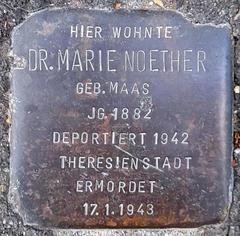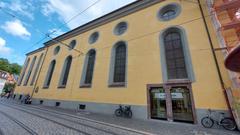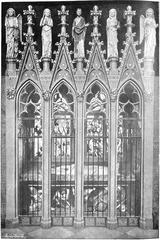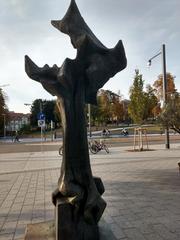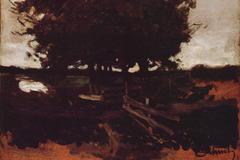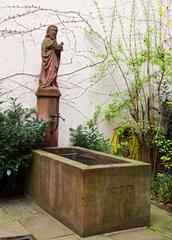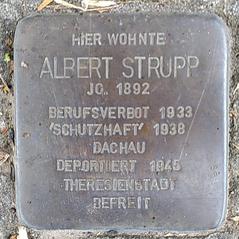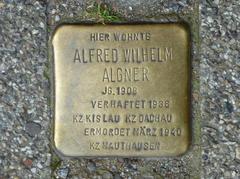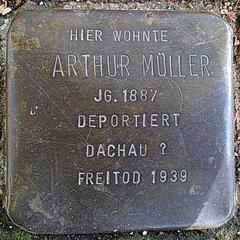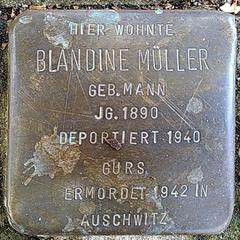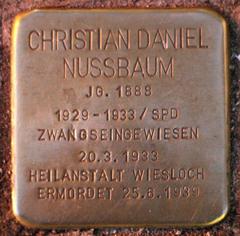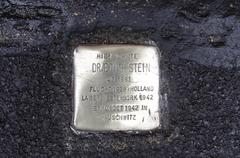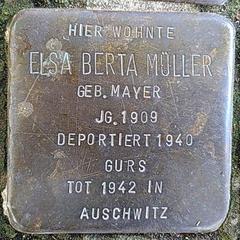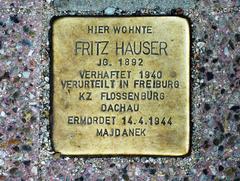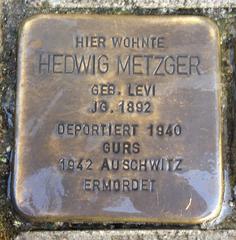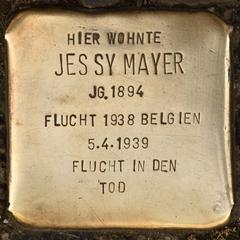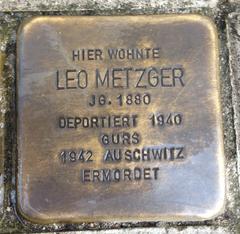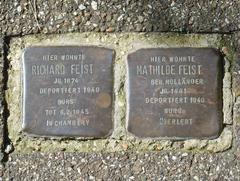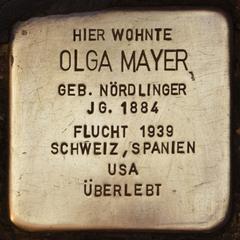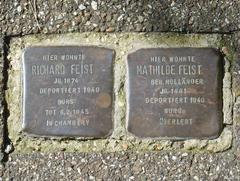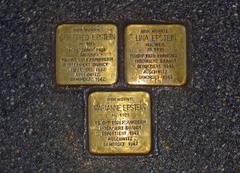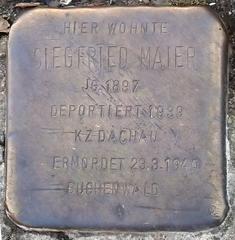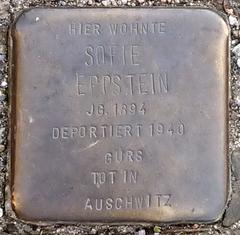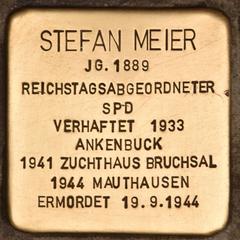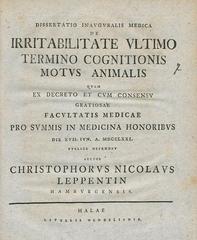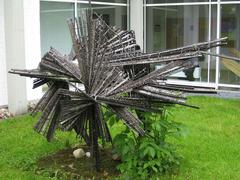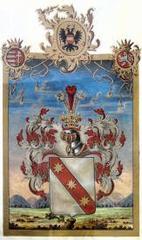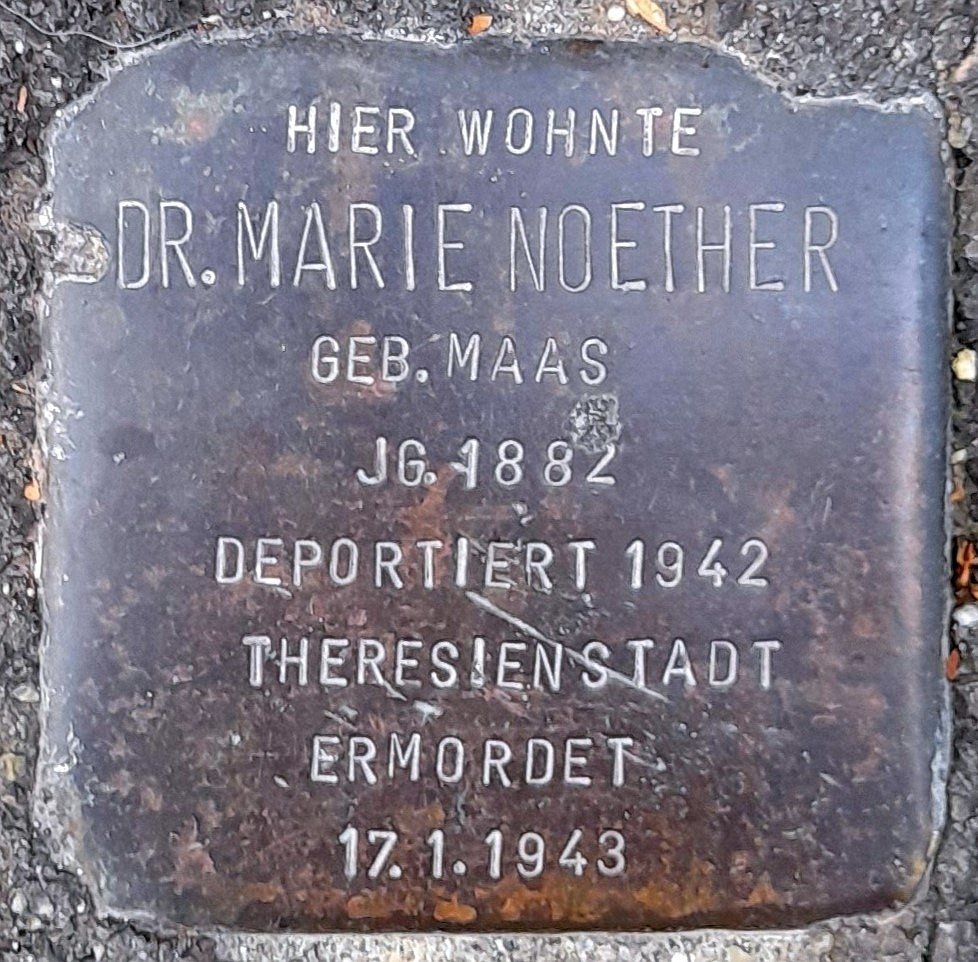
Stolperstein Dedicated To Dr. Marie Noether (Urachstraße 53)
Visiting Stolperstein Dr. Marie Noether in Freiburg im Breisgau: A Comprehensive Guide
Date: 14/06/2025
Introduction
The Stolperstein dedicated to Dr. Marie Noether at Urachstraße 53 in Freiburg im Breisgau offers a powerful and intimate encounter with the memory of a pioneering mathematician and Holocaust victim. As part of the larger Stolpersteine (“stumbling stones”) project—the world’s largest decentralized Holocaust memorial—this brass plaque embedded in the sidewalk invites passersby to pause, reflect, and honor the individual stories behind historic tragedies. This guide provides a detailed overview of the Stolperstein’s history, significance, visitor logistics, and respectful engagement practices, as well as tips for exploring related memorials and attractions in Freiburg.
The Stolpersteine Project: Origins and Impact
Initiated by German artist Gunter Demnig in 1992, the Stolpersteine project seeks to commemorate individuals persecuted or murdered by the Nazi regime. Each Stolperstein is a hand-engraved brass plate measuring 10 x 10 cm, set into the pavement in front of the victim’s last freely chosen residence. As of 2024, more than 100,000 Stolpersteine have been installed across 27 European countries, making the project the largest Holocaust memorial in the world (pragueviews.com; fabriziomusacchio.com; Stolpersteine in Freiburg).
The name “Stolperstein” metaphorically refers to the way these stones encourage a metaphorical “stumble” of thought—prompting those who notice them to bow and read the inscription, thereby paying respect and keeping memory alive. The project is notable for its personal approach: each stone is a unique memorial to an individual, countering the anonymity of large, centralized monuments (pragueviews.com).
Dr. Marie Noether: Life and Legacy
Dr. Marie Noether (née Maas) was born on March 5, 1882, in Mannheim. She married Dr. Paul Noether, a noted chemist, and together they had twins, Edith and Rolf. The Noether family resided in Freiburg-Wiehre. Facing mounting anti-Semitism and persecution with the rise of Nazism, the family endured immense hardship. Dr. Paul Noether died by suicide in Switzerland in 1934, a tragedy influenced by the oppressive environment of the time. Dr. Marie Noether subsequently moved to Urachstraße 53, where she lived with her dogs, suffering from significant mobility challenges. Her children managed to escape to England and survived the Holocaust (Stolpersteine in Freiburg – Dr. Marie Noether).
The Stolperstein at Urachstraße 53 marks Dr. Noether’s last freely chosen residence, memorializing both her personal story and the broader tragedy of forced exile and loss during the Holocaust.
Visiting the Stolperstein at Urachstraße 53
Location and Accessibility
- Address: Urachstraße 53, 79102 Freiburg im Breisgau, Germany
- Neighborhood: Wiehre, a tranquil district known for its historic architecture and leafy streets
- Access: The site is easily reachable by tram, bus, bicycle, or on foot. Nearby tram and bus stops are a short walk away. Parking is limited; public transport is recommended.
The Stolperstein is embedded in the public sidewalk, flush with the pavement, and is accessible 24/7. The area is generally wheelchair-friendly, though some older sidewalks may be uneven.
Visitor Experience
- The Stolperstein is a small, brass-plated cube inscribed with:
“Hier wohnte Dr. Marie Noether geb. Maas, Jg. 1882, Flucht in den Tod 6.4.1934” - The site is quiet and residential, fostering a contemplative atmosphere.
- Visitors are encouraged to spend a moment in reflection, read the inscription, and honor Dr. Noether’s memory.
Etiquette and Remembrance
- Pause and Reflect: Take time to read and consider the story behind the stone.
- Leave a Tribute: It is customary to place a small stone, flower, or candle at the site as a sign of respect.
- Photography: Discreet photography is allowed. Be mindful of residents and the solemn nature of the memorial.
- Respect Privacy: The memorial is in front of a private residence; please respect neighbors’ privacy.
Exploring Freiburg’s Stolpersteine and Related Sites
Freiburg im Breisgau has embraced the Stolpersteine project, with over 480 stones commemorating individuals across the city (Stolpersteine in Freiburg). Exploring other Stolpersteine in the Wiehre district or central Freiburg provides a deeper understanding of the city’s Jewish heritage and the impact of the Holocaust.
Other significant sites include:
- Freiburg Jewish Cemetery
- Old Synagogue ruins
- Augustinermuseum (with exhibits on local history and Jewish culture)
- Freiburg Münster Cathedral and the historic Old Town
Guided Tours and Educational Resources
Guided walking tours focusing on Jewish history and Stolpersteine are available through the Freiburg tourism office and local organizations (visit.freiburg.de). These tours often provide valuable historical context and personal stories, enhancing the visitor experience.
Interactive maps and mobile apps, such as Audiala, offer practical tools for locating Stolpersteine throughout Freiburg and learning about the individuals commemorated (fabriziomusacchio.com).
Practical Information
- Visiting Hours: 24/7, no admission fee
- Accessibility: Most sites are wheelchair accessible; check local conditions for cobblestones or uneven sidewalks
- Transport: Use Freiburg’s efficient public transit system; tickets are available at stations or via mobile apps
- Best Time to Visit: Daylight hours for visibility; commemorative dates like International Holocaust Remembrance Day (Jan 27) or Kristallnacht anniversary (Nov 9) for special events
Frequently Asked Questions (FAQ)
Q: Are there specific visiting hours or ticket requirements?
A: No, Stolpersteine are accessible 24/7 without fees or tickets.
Q: Are guided tours available?
A: Yes, guided tours are organized by the Freiburg tourism office and educational groups.
Q: Is the Stolperstein at Urachstraße 53 accessible for people with disabilities?
A: Yes, the stone is at street level and accessible, though the sidewalk may be uneven in places.
Q: Is it appropriate to leave objects at the memorial?
A: Yes, placing small stones, flowers, or candles is a customary way to pay respects.
Q: How can I learn more or get involved?
A: Visit Stolpersteine in Freiburg or consult the official Stolpersteine project site.
Responsible Engagement and Community Involvement
The Stolpersteine project thrives on grassroots participation. Stones are funded through donations, and local volunteers often maintain them, especially on remembrance days. By visiting, participating in ceremonies, or simply sharing knowledge, visitors contribute to keeping history present and meaningful (pragueviews.com; fabriziomusacchio.com).
Conclusion
The Stolperstein at Urachstraße 53 is far more than a small memorial—it is a living testament to the courage, suffering, and enduring legacy of Dr. Marie Noether and countless others persecuted by the Nazi regime. Visiting this site, and others like it in Freiburg, transforms everyday city life into a space for reflection, remembrance, and education. Through respectful engagement and participation in local remembrance activities, visitors help ensure that the stories behind every Stolperstein remain part of our shared consciousness.
For an enriched experience, download the Audiala app for guided tours and interactive maps, and consult local heritage organizations for events and educational resources. Your visit not only honors the past but also supports the ongoing work of remembrance and historical awareness.
Sources and Further Reading
- Stolpersteine – Stumbling Stones: Pragueviews.com
- Stolperstein for Dr. Marie Noether in Freiburg: Fabrizio Musacchio
- Stolpersteine in Freiburg – Official Project Site
- Stumbling Stones Holocaust Memorials – Folklife Magazine
- Freiburg Tourism – Guided Tours and Visitor Information
- Stolpersteine Project Official Website
- City of Freiburg Cultural Office
